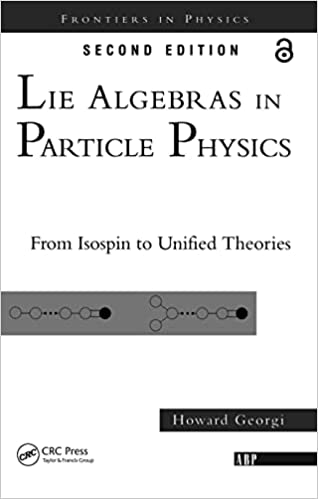by Howard Georgi (2nd edn) Perseus 0 7382 023 9.
It is fortunate that Howard Georgi has decided to publish a revised and updated version of his famous book Lie Algebras in Particle Physics, the previous edition having appeared in 1982. In this case it may have been a non-trivial problem to decide whether significant changes to the text are pertinent, because, as the author himself points out in the preface to the second edition, “this has been an extremely successful book”. Indeed, many generations of graduate students have learned from it the basic algebraic tools in SU and other such Lie algebras, which are at the core of the Standard Model and all of its conjectured extensions.
Besides a healthy evolution from old-fashioned typewriter fonts to modern LaTeX layout, the present edition includes numerous improvements in the presentation, as well as new material. Perhaps the most important piece of new material is an enlarged introductory chapter on finite group theory. This makes the book a little longer, but much more self-contained, because a lot of the group-theory jargon – such as conjugacy classes, characters and the role of the permutation group and Young tableaux – is introduced in a simple form, where the student can see the nuts and bolts explicitly.
Finite groups appear in many physics problems, so their absence from the first edition was somewhat unfortunate. On the other hand, in its present form the book can be used as a rather complete group-theory textbook for particle physics students.
One of the distinctive reasons for the book’s success had been the introduction of “physics-flavoured” chapters in which the algebraic techniques were put to work in simple yet important topics in high-energy physics. It is those physics chapters that have undergone comparatively major rewriting.
Keeping the essential outline of the first edition, one notes many changes in wording and emphasis, which reflects the author’s desire to suppress anecdotal information – such as the hadron tables of chapter XVII in the first edition, while at the same time making room for more useful theoretical applications. One good example is the description of algebraic constraints on the Higgs mechanism in various common unification models.
To summarize, the book’s contents have been improved while the basic philosophy – introducing the mathematical tools in a way as concrete and “calculational” as possible – is kept almost intact. Prof. Georgi has managed to maintain a fresh and direct “lecture notes” style – something that students and teachers will surely value.






